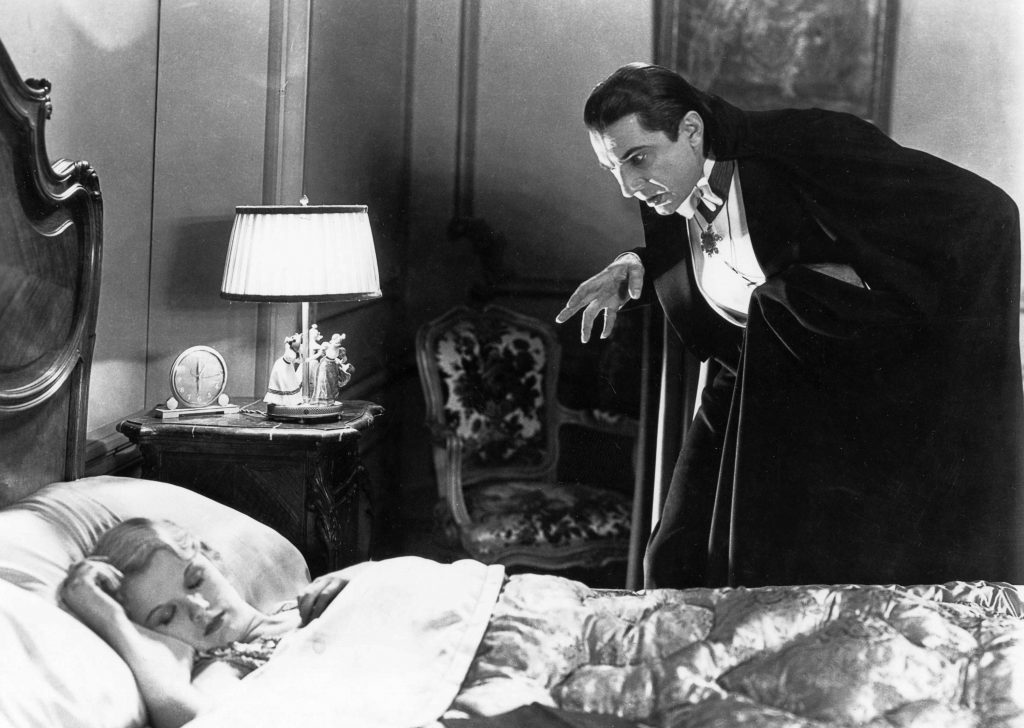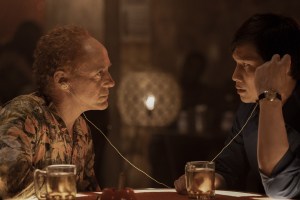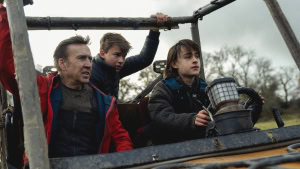Dracula (1931)
The dashing, mysterious Count Dracula (Bela Lugosi), after hypnotizing a British soldier, Renfield (Dwight Frye), into his mindless slave, travels to London and takes up residence in an old castle. Soon Dracula begins to wreak havoc, sucking the blood of young women and turning them into vampires. When he sets his sights on Mina (Helen Chandler), the daughter of a prominent doctor, vampire-hunter Van Helsing (Edward Van Sloan) is enlisted to put a stop to the count’s never-ending bloodlust.
In what will come as news to no one, Dracula is one the greatest pre-Code horror films ever to be released. Under the direction of Tod Browning (Freaks), the film rises above what was expected from a supernatural film to a work of art. The cinematography from Karl Freund is striking in the way it utilizes lighting to bring this creature of the night to the screen. The film is bathed beautifully in shadow as dread emerges from the darkness, even when it is at a luxurious pace. The use of the Tchaikovsky excerpt during the opening credits is the perfect mixture of beautiful and mysterious to begin this journey. Even with all of the impressive elements, the transcendent Bela Lugosi is the obvious standout aspect of this feature. The way in which he brings to life this titular figure was essential is guiding all future performances of vampiric characters. One slight downside to this production is that it often feels like a stage-play, which is where Lugosi originated the role. At less than 80 minutes in length, the film keeps a steady pace that rarely lacks intrigue. Even the simultaneously filmed Spanish version stands firmly alongside the American version as a triumph with Carlos Villarías as Conde Drácula. Horror films simply would not be the same without this classic.

Frankenstein (1931)
This iconic horror film follows the obsessed scientist Dr. Henry Frankenstein (Colin Clive) as he attempts to create life by assembling a creature from body parts of the deceased. Aided by his loyal misshapen assistant, Fritz (Dwight Frye), Frankenstein succeeds in animating his monster (Boris Karloff), but, confused and traumatized, it escapes into the countryside and begins to wreak havoc. Frankenstein searches for the elusive being, and eventually must confront his tormented creation.
If Dracula was essential in opening the door of all modern horror films, it was Frankenstein later that year which ultimately demolished it. This pre-Code tale had even more unsettling moments which made various pockets around the United States call for censorship as many thought it simply went too far. James Whale had crafted a poignant and terrifying feature which holds up the best out of any of the films included in this set. The idea itself of robbing graves in order to harvest various body parts is supremely unsettling when you stop to think about it. This makes it all the more impressive that the legendary Boris Karloff is able to conjure such sympathy for this monstrosity. Sure, the makeup is doing much of the heavy lifting for the monster, but it is the nuances Karloff brings just beneath the surface that is key to making Frankenstein’s Monster so ubiquitous. When you look back upon the film, it is easy to remember all of the famous moments tied to it; the screaming of “It’s alive” is still said by those who are somehow not aware of its origins, while the hunched servant is an easy societal shorthand that is understood by all. Yet you must remember how effective it is even beyond the cultural impact. There are so many narrative levels to this tale, but purely on a visceral level this film works in all respects.
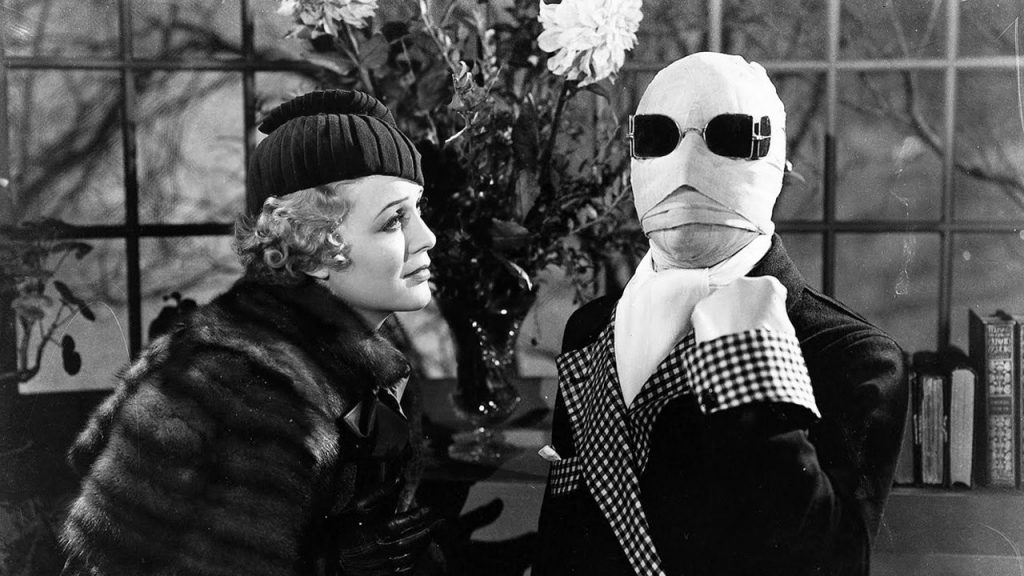
The Invisible Man (1933)
While researching a new drug, Dr. Jack Griffin (Claude Rains) stumbles on a potion that can make him invisible. When he reveals his new ability to his old mentor (Henry Travers) and his fiancée (Gloria Stuart), it’s clear that a side effect of the potion is insanity. Jack goes on a violent rampage, and the police struggle to hunt him down, unable to see their target, while his mentor and his former partner (William Harrigan) desperately try to devise a plan to capture him.
Leigh Whannell did a superb job of bringing a renewed sense of urgency to The Invisible Man last year. Still, there is a reason the original 1933 version is considered a classic. James Whale once again steps behind the camera to craft an increasingly sinister tale that once again holds up to modern scrutiny. One of the notable strengths of this feature is the dark-edged humor that is deftly employed throughout. You are initially drawn in by the joy that Griffin exudes as he revels in his invisibility. Rains dazzles in his delivery of the smartly written dialogue since he is bereft of the typical tools a performer usually has to utilize. One also should not discount the physicality he brings to the role with large gestures illuminating much about the character. His descent into madness is unnerving as the performance subtly adjusts to the new reality. This performance is complemented perfectly with the marvelous special effects that still evoke wonder to this day. The story unfolds without the need to line up with audience expectations. The character we are following is fully unpredictable and the story takes on the same identity. This is a deliriously demented little tale which is immensely watchable. The subversion of the expected in the new one is just one of many homages to this landmark work.
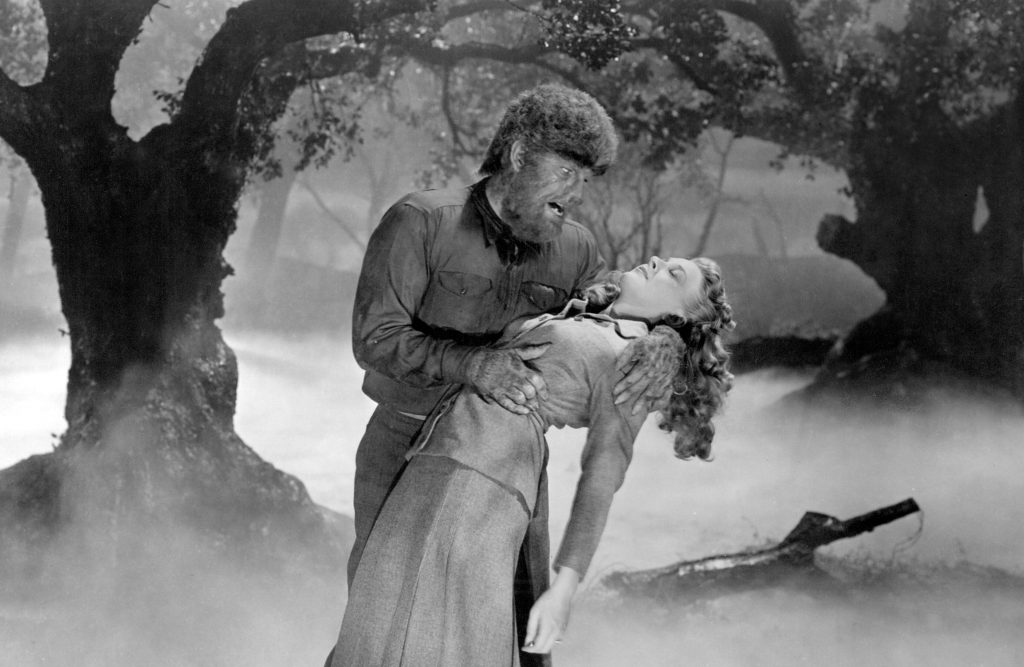
The Wolf Man (1941)
When his brother dies, Larry Talbot (Lon Chaney) returns to Wales and reconciles with his father (Claude Rains). While there, he visits an antique shop and, hoping to impress Gwen (Evelyn Ankers), the attractive shopkeeper, buys a silver walking cane. That same night he kills a wolf with it, only to later learn that he actually killed a man (Bela Lugosi). A gypsy (Maria Ouspenskaya) explains that it was her son, a werewolf, that he killed, and that Larry is now one himself.
Closing out the set is another one of the strongest horror films ever to be released. Lon Chaney Jr. really delivers a performance for the books as Larry Talbot, the man who will soon become our titular monster. Chaney Jr. had been living in the shadow of his famous father, but with this role he solidified an iconic turn completely for himself. This story is not simply thrilling for its special effects, but rather for the bubbling sense of chaos it represents. Within each of us is a side that we know we cannot show the world as polite society has bred out our base instincts. Yet, The Wolf Man takes these instincts and crafts an entire character who is roaming through the world without the filter of what is right and what is wrong. This film is distinctly intriguing due to the way it makes the human drama of Larry Talbot just as captivating as the wolf antics that happen along the way. Chaney is completely in control as his character loses his grip on control. The aforementioned special effects are not the only thing this film has going for it, but that does not mean that they are not mighty impressive. The makeup work from Jack Pierce is essential to the iconic nature of this character which allows him to be a bit more chilling. On a purely visceral level, The Wolf Man is one of the least frightening of the core Universal ensemble of characters, but he remains a transfixing figure nonetheless in the classic entry in the horror genre.
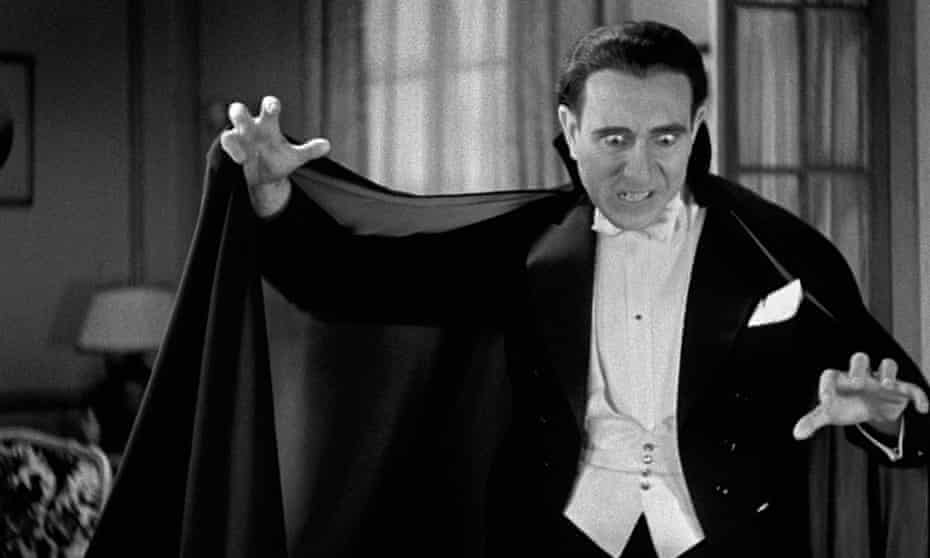
Video Quality
First things first, all five films in Universal Classic Monsters: Icons of Horror Collection are given a 2160p 4K UHD HDR upgrade that serve as a solid step up from their Blu-Ray counterparts. The set also includes Blu-Ray versions of each film that recycle old Universal Blu-Ray discs. The previous releases were pretty stunning to various degrees, so improvements in this set range from subtle to outstanding. While these transfers seem to be derived from the previous masters, additional clean-up has been performed so that you will find nary a scratch throughout the presentation. In an effort to not duplicate descriptions, I will largely attempt to group films together while pointing out noticeable differences.
The black and white cinematography is simply gorgeous with smooth gradients and subtle textures. This transfer maintains the filmic quality of the picture with fine film grain giving way to rich details. On these 4K UHD discs, the grain is tighter and more naturally resolved save for a few instances in The Invisible Man where the grain seems to be frozen. If for some reason you are put off by the benefits of the original film grain being on full display, then this release might not be for you. Subtle details that never would have been able to be detected are suddenly on full display with this transfer. Black levels are incredibly deep without any pesky nuisances such as digital noise or compression artifacts. With these films in particular that is of great importance, as it yields sharper silhouettes and a more impressive pronouncement between light and dark.

This picture showcases some excellent depth to the image which gives way to a pleasing sense of scale within the locale. These transfers are a fine showcase of textural details in the costumes and production design. Take one look at the laboratory of Dr. Frankenstein and prepared to be knocked out by the details in the machinery. The upgrades from Dracula and Frankenstein are impressive, but may not win over everyone as a vital upgrade in the way that The Invisible Man and The Wolf Man do. While the opticals in The Invisible Man still showcase their visual limitations, the lack of crush and better compression for this title is sure to please longtime fans. That’s not to mention the crisp details such as textures on the bandages and gloves. Even issues in these films where mattes and painted backdrops were more obvious have been handled more seamlessly on this transfer.
The transfer also eradicates any dust specks or print damage that previously plagued the best surviving elements. The Wolf Man is the biggest benefactor of this as it goes from an old smoothed-over Blu-Ray littered with print damage to a 4K UHD nearly pristine with a stunning amount of dimensionality. The same could be said for the Spanish version of Dracula, which has been provided with an extensive cleanup of a previously damaged reel which allows it to look better than ever. This picture showcases an impressive amount of depth to the image which gives way to a pleasing sense of scale within the locale. Casual film fans may not believe that 4K could benefit a black-and-white film, but that could not be further from the truth. Universal has accomplished something truly stupendous with these five transfers. Fans who make the upgrade should not have any regrets.
Audio Quality
All four 4K UHD Blu-Ray discs come with their original recycled DTS-HD 2.0 Master Audio mono tracks that are likewise quite fabulous. Dialogue and background noises are represented perfectly along with powerful music mostly contained to the credits of the features. No sounds ever overpower the dialogue that is of the utmost importance to the films. There is no overwhelming age related wear and tear to the tracks outside of some minor hissing and just a bit of distortion in the harshest upper frequencies. While mostly dialogue driven throughout, the more kinetic moments are handled with ease and give the tracks a bit of punch. The soundtrack also evokes a spaciousness and sense of presence that really helps transport you into these worlds. There are a plethora of alternate language audio tracks and subtitle options for those who desire them. The quality of these discs are just about as great as we could hope they would be.

Special Features
Dracula
- Audio Commentary #1: Film Historian David J. Skal offers a fairly dry but ultimately informative track in which he dives deep into the historical details surrounding the production.
- Audio Commentary #2: Steve Haberman, Screenwriter of Dracula: Dead and Loving It, provides similar details while also addressing the modern criticisms of the film.
- Alternate Score By Philip Glass Performed By The Kronos Quartet: An option to watch the film with a different, momentous score presented is lossy Dolby Digital 2.0.
- Introduction To The Spanish Version: A four-minute introduction from actor Lupita Tovar Kohner in which she discusses her experiences working on the film, her co-stars, and some of the small differences between the two versions.
- The Road To Dracula: A 35-minute vintage featurette with host Carla Laemmle, performer and niece to Universal founder Carl Laemmle, in which she and various film historians, filmmakers and more discuss the influence of Dracula, the production of the film, the Spanish version and more. This is a well-constructed piece that brings together many essential voices.
- Lugosi – The Dark Prince: A 36-minute featurette which explores the life and career of the great Bela Lugosi, his magnetic presence, being typecast, his legacy and more as discussed by a wide range of film historians.
- Dracula – The Restoration: A nine-minute piece which guides you through the meticulous process of ensuring the preservation of this classic film through a restoration of the film and sound elements. This is a fun piece for hardcore cinephiles.
- Dracula Archives: A nine-minute slideshow of posters, promotional artwork, production stills and more from the film.
- Trailer Gallery: There are trailers provided for Dracula, Dracula’s Daughter, Son Of Dracula, House of Dracula, House of Frankenstein, and Abbott And Costello Meet Frankenstein.
- Monster Tracks: An option to view this film with a trivia track which offers some intriguing notes.
Frankenstein
- Audio Commentary #1: Film Historian Rudy Behlmer delivers a thoroughly prepared essay that goes into the history of the story and the production of the film.
- Audio Commentary #2: Historian Sir Christopher Frayling is slightly more conversational in his approach to his track and he throws in slight asides that keep you more engaged but equally informed throughout the runtime.
- The Frankenstein Files – How Hollywood Made A Monster: A 45-minute piece hosted by Film Historian David J. Skal which explores the original source material, how James Whale shaped the story into his classic film, the stage production, the performances, the look of the character, the film’s legacy and more.
- Karloff – The Gentle Monster: A 38-minute featurette which takes a thorough look at the life and career of Boris Karloff along with the special traits he brought to the horror genre which made him such a popular figure. There are some fun insights into his performance as the Monster, his work with Val Lewton, and the legacy he left behind.
- Universal Horror: A 95-minute feature which guides you through the great Universal catalog of horror films. There is input from various well-known subjects such as Ray Bradbury and more.
- Frankenstein Archives: A nine-minute slideshow of posters, promotional artwork, production stills and more from the film.
- Boo! – A Short Film: A ten-minute parody short from 1932 from writer/director Albert DeMond. There are some close calls with some of the Universal monsters in this one.
- Trailer Gallery: There are trailers provided for Frankenstein, The Bride of Frankenstein, The Ghost of Frankenstein, Frankenstein Meets The Wolf Man, House Of Frankenstein, House of Dracula and Abbott and Costello Meet Frankenstein.
- 100 Years Of Universal – Restoring The Classics: A nine-minute look at the preservation and restoration efforts at Universal which is not Frankenstein specific.
- Monster Tracks: An option to view this film with a trivia track which offers some intriguing notes.
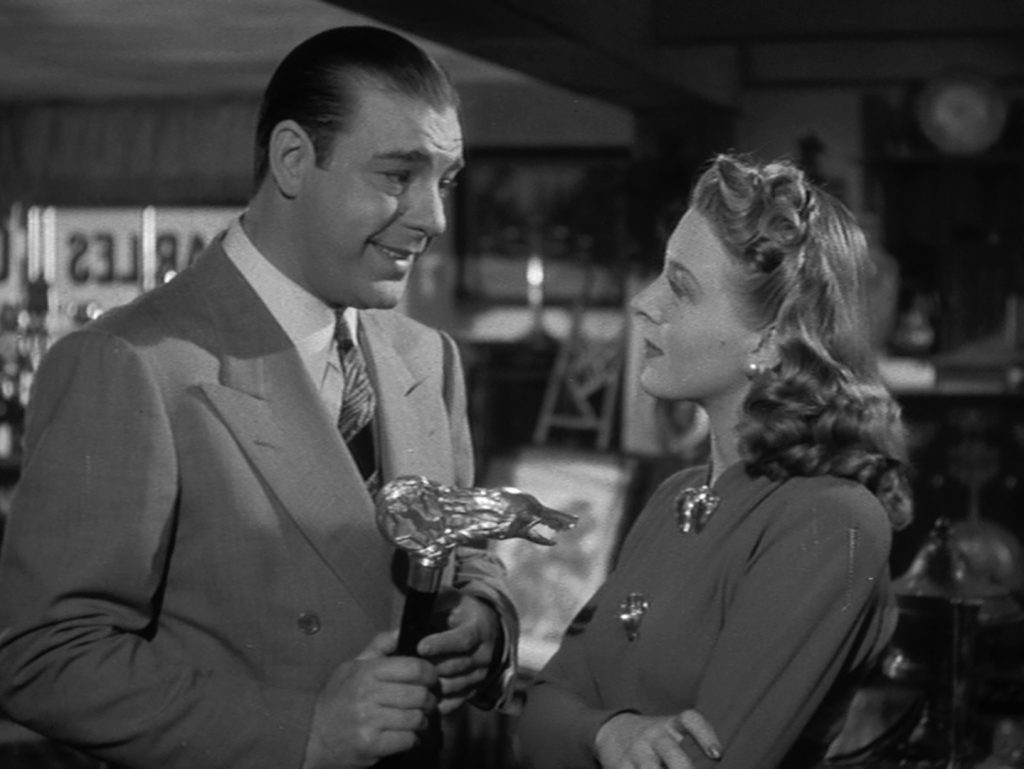
The Invisible Man
- Audio Commentary: Film Historian Rudy Behlmer delivers another thoroughly prepared essay that goes into the history of the story and the production of the film. Jam packed with information but the monotone nature may lull some to sleep.
- Now You See Him – The Invisible Man Revealed!: A 35-minute featurette hosted by Rudy Behlmer in which film historians and notable guests such as Ian McKellan delve into the character of The Invisible Man from the original source material, the process of adapting him for the screen, the performances, the themes within the story, the special effects and so much more that is worthwhile.
- Production Photographs: A nearly five-minute slideshow of posters, promotional artwork, production stills and more from the film.
- Trailer Gallery: There are trailers provided for The Invisible Man Returns, Invisible Agent and Abbott And Costello Meet The Invisible Man.
- 100 Years Of Universal – Unforgettable Characters: An eight-minute piece which shows off some of the most iconic characters from the Universal catalog from their horror output and beyond.
The Wolf Man
- Audio Commentary: Film Historian Tom Weaver delivers the most entertaining commentary track of the set while still being very informative. Weaver brings an enthusiasm to the track that is appreciated while delving into the history of the film, the performers, the film’s legacy and much more.
- Monster By Moonlight: Director John Landis (An American Werewolf In London) hosts this retrospective of the film which delves into the history, development, production, its legacy, the sequels, and so much more that goes towards enriching your appreciation of the series.
- The Wolf Man – From Ancient Curse To Modern Myth: A ten-minute featurette in which various figures such as directors Joe Dante and Mick Garris discuss the appeal of The Wolf Man.
- Pure In Heart – The Life And Legacy Of Lon Chaney Jr.: A 37-minute featurette which takes a thorough look at the life and career of Lon Chaney Jr. in which the participants reveal some extremely dysfunctional family dynamics, the idea of being typecast, his role in horror films, the warmth he shared with other performers and more.
- He Who Made Monsters – The Life And Art Of Jack Pierce: A 25-minute featurette which shines a spotlight on makeup master Jack Pierce and how he helped shape the look of Universal’s early monsters.
- The Wolf Man Archives: A seven-minute slideshow of posters, promotional artwork, production stills and more from the film.
- Trailer Gallery: There are trailers provided for Werewolf of London, The Wolf Man, Frankenstein Meets The Wolf Man, House Of Frankenstein, House Of Dracula, Abbott and Costello Meet Frankenstein and She-Wolf Of London.
- 100 Years Of Universal – The Lot: A nearly ten-minute featurette which explores the classic Universal backlot.
Final Thoughts
The Universal Classic Monsters: Icons of Horror Collection brings together five films that rank among the best which changed the face of horror as we know it. Not only do they still hold up as pretty creepy films, but they often have a deeper subtext at play which gives them an emotional depth you can appreciate. Universal Pictures Home Entertainment has released a new 4K UHD Blu-Ray set featuring a truly wonderful A/V presentation and solid selection of legacy special features. While some upgrades are less drastic than others, fans of these monsters will want to treat themselves to the ultimate presentations of these works. Highly Recommended
Universal Classic Monsters: Icons of Horror Collection is currently available to purchase on 4K UHD Blu-Ray.
Note: Images presented in this review are not reflective of the image quality of the 4K UHD Blu-Ray.
Disclaimer: Universal Pictures Home Entertainment has supplied a copy of this set free of charge for review purposes. All opinions in this review are the honest reactions of the author.
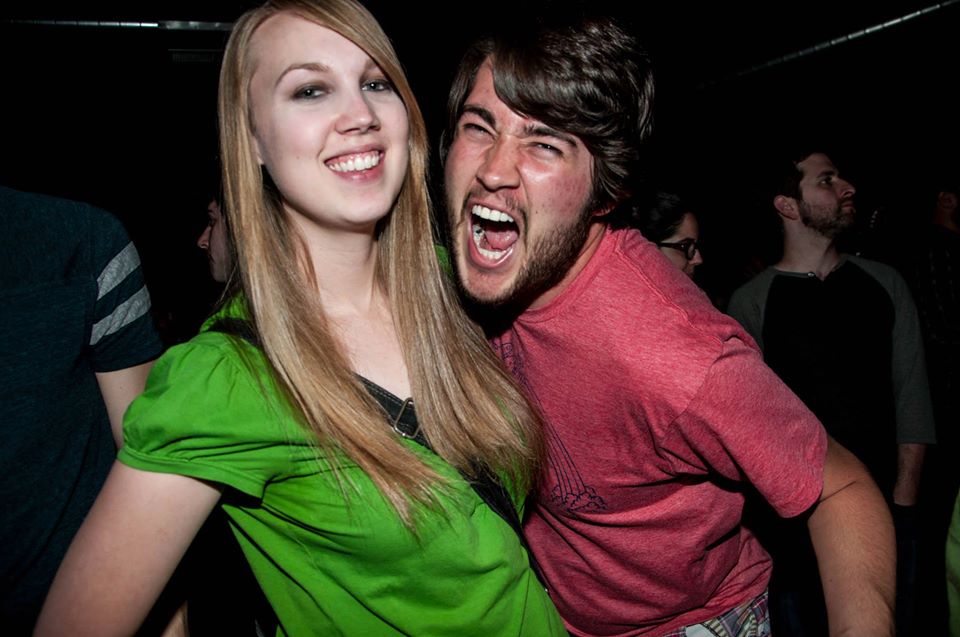
Dillon is most comfortable sitting around in a theatre all day watching both big budget and independent movies.


